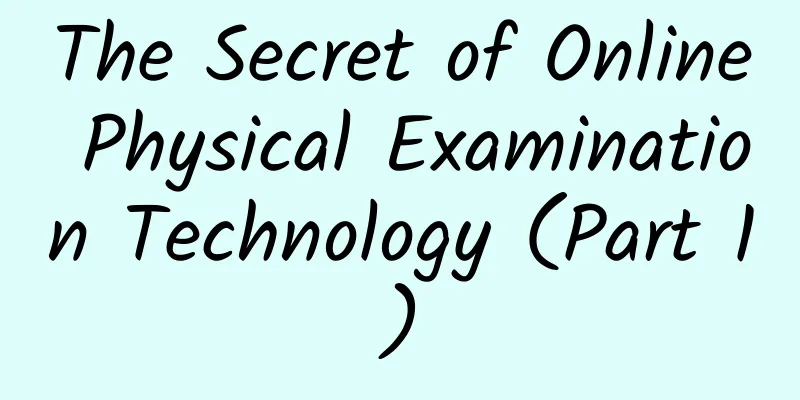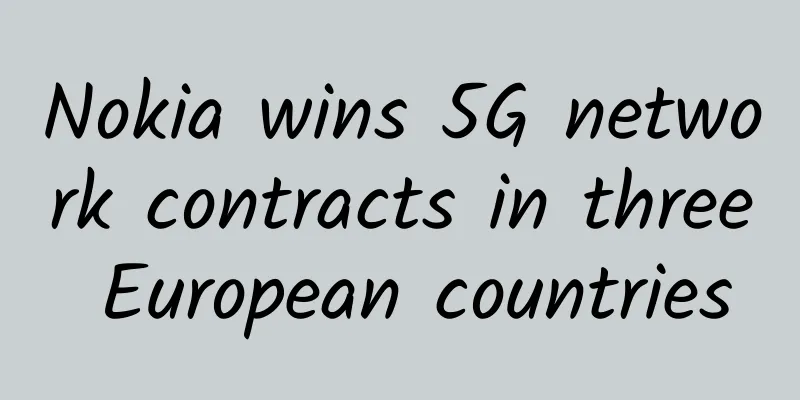Looking at 5G from a different perspective: Don’t talk about technology, talk about demand

|
4G changes life, 5G changes society. With the release of 5G mobile phones in 2019, the 5G era has begun, and countless investors and entrepreneurs with a keen sense of smell are studying investment opportunities in the 5G industry. However, market research focuses mostly on technical details and equipment investment in the upstream industrial chain, with less research on needs closer to consumers or businesses. This article does not discuss technical details, but mainly observes the application scenarios of 5G from the demand level, explores which demand pain points it can solve, and focuses on why I am optimistic about virtual reality technology and bearish on driverless technology? Why 5G will change society 5G (5th-Generation) is the abbreviation of the fifth generation of mobile communication technology. Compared with 4G, the performance goals of 5G are high data rate, reduced latency, energy saving, lower costs, increased system capacity and large-scale device connection. As shown in the table below, the significant improvement of 5G in key indicators will bring unexpected changes to society. In the 4G era, Internet companies are the biggest beneficiaries of the development of mobile networks. The total market value of major Internet companies in the world has increased by 191% in the past five years, and their profits have increased by 144%. Looking forward to 5G, the industrial Internet represented by the Internet of Things will become the main application scenario. On September 20, Miao Wei, Minister of Industry and Information Technology, said at a press conference held by the State Council Information Office, "I am still using a 4G mobile phone. Currently, only Huawei's mobile phone is compatible with SA and NSA. Starting next year, independent 5G networks will be put into use on a large scale. At present, 4G mobile phones are sufficient for most applications, and 80% of 5G is used in the industrial Internet." Lei Jun also said when talking about 5G, "I know that 5G will bring about earth-shaking changes, but I can't imagine what specific changes will occur." There are three kinds of major revolutions in human history. The first is to greatly increase human life expectancy. After all, the extension of life is the prerequisite for all changes; the second is to greatly improve human total factor productivity, such as the great material abundance brought about by the three industrial revolutions; the third is to greatly improve human enjoyment and stimulate human pursuit of a better life on the spiritual level. In my opinion, the opportunities of 5G lie in the second and third revolutions. 5G application scenario - VR The changes brought about by the substantial improvement of 5G's high bandwidth, large connections, and low latency may exceed expectations. I am not a communications expert and do not understand professional terms such as network slicing and self-organizing networks. This article assumes that the corresponding technology is mature and there are no obstacles. It will mainly explain why I am strongly optimistic about VR (virtual reality) from the perspective of user needs and business development laws. Before explaining the logic, I must introduce an important concept: the Hype Cycle. It is a tool used by companies to evaluate new technologies, using the timeline and market visibility to decide whether to adopt new technologies. The horizontal axis of the maturity curve is time, which represents the various stages that a technology will go through over time. The vertical axis is visibility (which can also be expressed as market expectations), which represents the market's assessment of the future value of technology during its development. Since 1995, Gartner has divided the curve into five stages based on its professional analysis, prediction and inference of the maturity and evolution speed of various new technologies and the time required to reach maturity:
VR has been considered by the market to be the next computing platform after computers and smartphones since its birth, shouldering the historical mission of changing the world. In 2015, capital poured in crazily, creating a bubble, and Yishang Display tripled in just a few months after the stock market crash. However, as more and more people experienced dizziness after experiencing VR, the enthusiasm quickly cooled down, and the poor user experience punctured the bubble. In 2016, VR companies represented by Baofeng Video successively laid off employees and had difficulty in financing. The immaturity of technology caused VR to enter a period of disillusionment with the bubble bursting, until 5G came out. Due to the technical limitations of the 4G era, VR devices often experience image delays when rendering high-resolution images due to limited computing power on the end side. When this delay reaches more than 20 milliseconds, users will experience a strong sense of dizziness due to the lack of coordination between visual movement and the vestibular system. The high bandwidth, large connection, and low latency features of 5G can perfectly solve technical difficulties and break through the bottleneck of VR development. Today, the VR industry has entered a steady recovery period in the technology maturity curve, and 5G will become a catalyst for the implementation and mass production of VR applications. Huawei has released the VR Glass, which weighs only 166g, in September this year. Although there are still various controversies in the market about the positioning, content, and innovation of VR glasses, it is undeniable that Huawei, a communications giant that has always focused on its business and has not easily entered other fields, has recognized the commercial value of VR and has been exploring its application scenarios in the 5G era. This is a small step for Huawei, but it may be a big step for the VR industry. The reasons why I am strongly optimistic about the commercial value of VR in the future 5G era are as follows. First, VR has great potential to increase the total factor productivity of society in the future and create unimaginable value for society. In the field of education, there has long been an imbalance in the strength of teachers between countries and regions. The long-term Matthew effect will lead to unfair educational resources, class solidification, and hinder the optimal allocation of talent resources. 5G+VR provides an effective solution to this problem. Compared with the traditional video playback course method, this immersive experience method has shown a qualitative leap in experience, allowing students all over the world to truly listen to the best teachers in the country and even the world. There is no significant difference in the educational experience received by children wearing VR glasses in remote mountainous areas and students in the classrooms of the best schools. The original lecturers will be released from the role of "teaching" and become tutors for students, spending most of their energy on "preaching and solving doubts." The application of 5G+VR in education will significantly improve the education level in backward areas, increase the chances of poor families producing noble children, accelerate class mobility, and prevent solidification. When the overall talent quality and mobility of society are improved, the production efficiency of human capital will be improved, thus laying the foundation for the improvement of total factor productivity. Under the current predicament of the disappearance of my country's demographic dividend and the decreasing marginal rate of return on capital, the improvement of total factor productivity will provide a powerful engine for economic transformation. 5G+VR will also perfectly meet the technical conditions required for telemedicine, making this beautiful idea a reality. The problems faced by the medical industry are similar to those of the education industry. The best doctors and the best teachers are scarce resources. People's physical health and the education level of young people are major events in life, which are related to the rise and fall of the family and the fate of the country. The telemedicine model adopted by 5G+VR can greatly alleviate the pressure on the allocation of high-quality medical resources in the medical industry, give full play to the advantages of medical technology and medical equipment of large hospitals or specialized medical centers, and provide remote medical information and services to people with poor medical and health conditions and special environments. Experts in each subdivision only need to wear VR glasses to conduct remote diagnosis for a few minutes, which can greatly save hospital resources. This model breaks the restrictions of the region, improves the medical level of the entire society, balances the problem of uneven distribution of medical resources, and reduces the medical costs of the entire society. Secondly, VR positioning in audio-visual entertainment also has huge commercial value, which can greatly improve the quality of human spiritual enjoyment. After material satisfaction, human beings' pursuit of spiritual level will continue to improve, which is directly related to the degree of happiness. Imagine that you can enjoy the live viewing experience of NBA or World Cup while sitting at home with VR glasses. In the future, live broadcasts of concerts, artistic performances, and various sports events in VR will benefit audiences around the world. The immersive experience provided will also trigger a digital revolution in the audio-visual entertainment industry and encourage the vigorous development of high-quality content and cultural industries. In short, the maturity of 5G technology will become the core driving factor for the enrichment of virtual reality application scenarios and industrialization. Virtual reality equipped with 5G will significantly reduce the cost of free cross-regional flow of high-quality resources, solve pain points that have never been solved in the past, meet human needs that can never be filled, and create unimaginable value for society. Why I don't like driverless cars The concept of autonomous driving has been very popular since it was proposed, and industrial capital such as Google, Baidu and traditional car companies have poured into this industry. Therefore, it must be said that it takes a lot of courage to be bearish on autonomous driving at this time, but in the spirit of the truth becoming clearer through debate, the author would like to question it from two levels: technology and humanity: First, the technical means adopted by unmanned driving have too idealistic requirements for the required external environment. Precise sensors, standardized road conditions, these idealized infrastructure conditions do not exist in reality. 5G provides the ability to speed up data transmission, increase connection capacity, and reduce latency, but it cannot solve all technical problems. At present, the technological progress supporting 5G cannot provide a strong solution within a few years. How can machine learning solve the problem of complex and non-standardized road conditions in different cities in China, how can sensors accurately perceive road conditions in bad weather, how to make legal identification when unmanned driving and traditional vehicles have a car accident, and whether the optimal decision algorithm for unmanned driving in emergencies is based on a balance of pros and cons or moral ethics? After the industrialization of unmanned driving in driving scenarios, if a bug occurs in a certain algorithm decision-making mechanism, it will have catastrophic consequences for society. Human life is at stake. Forgive me for not being able to safely entrust the lives of countless people to complex and game-filled algorithms. Second, driverless cars violate human nature. Remember that famous survey? 80% of the people who participated in the survey believed that their driving skills were better than others. As most analyses say, this reflects the overconfidence in human nature. However, I saw the sense of control hidden behind it - the sense of control over security. I believe that when driverless technology matures, there will be solid data to show how much lower the probability of accidents in driverless cars is than in traditional driving, and there will be overwhelming reports to prove the safety of driverless cars. But we overlooked a key point in human nature: people like the sense of control and the sense of security of doing things themselves. Imagine, when you sit behind the steering wheel and watch the system make all kinds of decisions for you, and each decision will affect your life and property, will you feel anxious and insecure? The steering wheel is right in front of you, but you don't control it. You are nervous about every turn and hold your breath every time you accelerate. Not holding the steering wheel is more energy-consuming than holding it. Even a small mistake will make you lose patience and trust in autonomous driving. After all, 80% of people think that their driving skills are better than others, and they also think that they are better than the autonomous driving operating system that made mistakes. A psychological study at Harvard University shows that when people can do something, they prefer to do something to gain a sense of security rather than doing nothing. For example, although countless studies have shown that reducing the frequency of stock trading can help to obtain higher returns, there are still so many investors and even institutions that watch the market, make decisions, and place orders every day. Everyone thinks that doing something is better than doing nothing, so that even if the results are not satisfactory, there is a sentence "I tried my best" to comfort themselves. The need for a sense of security in human nature often exceeds our own imagination. Currently, the institutions participating in the investment in the field of autonomous driving are mainly industrial capital represented by traditional automobiles. The participation of VC/PE in the field of autonomous driving is significantly weaker than that in other emerging technologies. "We don't invest in anti-humanity" is the general consensus of primary market investors. The author boldly predicts that driverless cars are ultimately just an overly idealistic utopian idea. Even if all the network latency, algorithm capabilities, battery energy and other technical preparations meet expectations, they will ultimately fail to achieve industrialization in business. In the history of business, as long as there is a problem on the demand side of the product or service provided by the enterprise, no matter how perfect the technology and business model are, it will end in failure and return to silence. Summarize In short, the huge improvement brought by 5G will trigger an unimaginable industrial revolution and cover all areas closely related to our production and life. 2019 is the first year of 5G, and many application scenarios related to it are still in the brewing stage. It is also the best stage for investors and entrepreneurs to lay out. We cannot predict when 5G or even 6G will explosively change our lives, but we can be sure that a broad blueprint that humans long for is slowly unfolding in the future. It will definitely come, but only for those who are prepared. |
<<: Working principles of physical layer/data link layer/network layer
>>: Introduction and solution of TCP sticky packet and half packet (Part 1)
Recommend
How to establish a performance testing strategy in a cloud environment
【51CTO.com Quick Translation】 Living in the prese...
Daily Algorithm: Stair Climbing Problem
[[433205]] Suppose you are climbing a staircase. ...
5G makes the Internet of Everything possible. Planning the Internet of Things in the era of big connections
The development of technologies such as 5G, cloud...
What issues should be paid attention to in the construction of office integrated network cabling?
The integrated wiring of the office will definite...
From "Chuan" to "Wang": With the change of one word, how does H3C reconstruct the smart system of urban governance?
In the past, one had to run back and forth betwee...
Summarize various issues between wireless AP and AC of WiFi system
In wireless network construction, it is said that...
What are the most common types of communications antennas?
The most common communication antennas include di...
Meeting the Challenges of Multi-Cluster Kubernetes
[[441857]] 【51CTO.com Quick Translation】 As more ...
Best Practices for Stream Computing Processing with Flink on Zeppelin
Content framework: Big Data Overview Flink Learni...
SD-WAN Today and Tomorrow
[[429002]] Traditional network technology faces e...
iOVZ 40% off on all VPS hosts, Los Angeles/Korea VPS monthly payment starts from 36 yuan
iOVZ Cloud is a Chinese business. Although the do...
The latest report on the value of the French 5G market: 100% 5G network is expected to be achieved by 2030
According to foreign media reports, in December 2...
Security advantages and challenges of HTTP3 protocol
HTTP/3 is the third official version of the Hyper...
As the 5G era approaches, mobile bearer networks face new challenges
As 5G commercialization approaches, 5G technology...
An article to understand TCP, UDP concepts and TCP three-way handshake connection
[[245408]] OSI computer network 7-layer model TCP...









